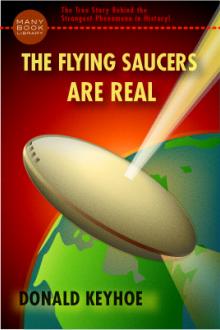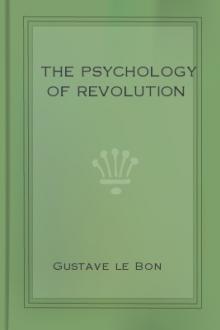The Psychology of Beauty by Ethel D. Puffer (good non fiction books to read TXT) 📕

- Author: Ethel D. Puffer
- Performer: -
Book online «The Psychology of Beauty by Ethel D. Puffer (good non fiction books to read TXT) 📕». Author Ethel D. Puffer
What, then, the author of “The Sense of Beauty” calls “the beauty of the second term,”—the power to suggest feeling through the medium of associated ideas,—we may deny to impart any aesthetic character whatever. Professor Santayana has, indeed, mediated between the formalists and the idealists; but his theory would lead us to attributions of beauty from which common sense revolts; and we have seen the secret of its deficiency to lie in the confusion of the personal with the aesthetic attitude. If now we amend his definition, “Beauty is objectified pleasure,” to “Beauty is objectified aesthetic pleasure,” we are advanced no further.
IIIThe problem stands, then: how to provide for the presence of ideas in the work of art, and the definite emotions aroused by it, either by bringing them somehow into the definition of beauty in itself, or by showing how their presence is related to the full aesthetic experience. But, first of all, we have to ask how the aesthetic pleasure even in formal beauty is constituted, and to what extent expression belongs to the beauty of pure form. Form is impressive, or directly beautiful, through its harmony with the conditions offered by our senses, primarily of sight and hearing, and through the harmony of its combinations of suggestions and impulses with the entire organism. I enjoy a well-composed picture like Titian’s “Sacred and Profane Love,”
because the good composition means such a balanced relation of impulses of attention, of incipient movements, as harmonizes with such an organism as mine, tending to move toward both sides, and yet unified and stable; and because the combination of colors is at once stimulating and soothing to my eyes. So much for IMPRESSION, beauty of the first term. But it is not only that harmonious state of my visual and motor functions that I get out of the form of a picture. No, I have, besides all this pleasure, a real exhilaration or emotion, a definite mood of repose or gayety or triumph, without any fringe of association, which yet certainly contributes to my feeling of the beauty of the experience, and so of the work of art. How did it come out of the form?
Well, this very harmonious excitation of the organism has brought with it just such an organic reverberation as, the current theory of emotion asserts, must be at the bottom of all our emotional states. A certain sequence of nervous shocks and of vasomotor changes, certain stimulations and relations and contractions of the internal organs have been set up as the “diffusive wave” from the sense-stimulations, and a particular emotional tinge is the result. That is a direct impression, but an expression too. Take the same case on a much lower level. A glass of wine makes me cheerful, not because it arouses cheerful ideas directly, but because the organic changes it sets up are such as belong to the MOTIVATED expression of joy, and have the same effect. A deep, slow movement played by an orchestra can affect me in two ways. It may be that I have usually connected that sort of music with religious experiences, and all the profound and inspiring feelings belonging thereto; and so I transfer those feelings to the music and give it those adjectives. Or the slowness of the rhythmic pulse that is set up in me, the largeness, the volume, the depth of sound, all bring about in me the kind of nervous state that belongs to a reposeful and yet deeply moved feeling. The second experience is expression through impression, through the inward changes that the form itself sets up. The first is expression through the medium of something external,—an idea which brings with it a feeling,—something that does not belong to the music itself, but to my own individual experiences.
This distinction between internal and external expressiveness is perfectly clear for music, and also for architecture. In painting, too, it can easily be traced. We know the effect that is produced by broken lines, by upward moving ones,—like the “always aspiring” of the Gothic cathedral. The low-lying, wide expanses of some of the old Dutch landscapists give us repose, not because they remind us of the peaceful happiness of the land, but because we cannot melt ourselves into all those horizontal lines without that restful feeling which accompanies such relaxation; and our emotion is read into the picture as AESTHETIC pleasure, because it came out of the abstract forms,—the PAINTING in the picture.
The beauty of form is thus seen to be inseparably allied with a certain degree of emotional expressiveness in a way that does not distract, like the association of ideas, from the pure aesthetic experience. This quality of expressiveness should not, however, become a part of the definition of beauty, so that it should be said that the greater the emotional expressiveness, the more beautiful the object. For if that were true, such music, for instance, as all acknowledge quite mediocre, would be felt as most beautiful by those who find in it a strong and definite emotion; and a Strauss waltz, which makes us more merry than one by Mendelssohn, should be in so far more beautiful. This, of course, we are not ready to concede; and it seems, therefore, most logical to regard the special emotional effects of formal beauty rather as a corollary to, than as a part of, the essential aesthetic mood. But if we give the name emotion to that perfectly vague but unmistakable excitement with which we respond to purely formal beauty,—that indescribable exaltation with which we listen to “absolute”
music,—then we must say that that emotion is but another name for aesthetic pleasure. Objectively, we have formal beauty; subjectively, on the physiological side, a harmonious action of the organism, and on the mental side the undefined exaltation which is known as aesthetic pleasure.
IVUp to this point, however, we have considered only the relation between purely formal beauty and the various shades of emotional response to it; now we may turn to the original question which we set ourselves, how to provide, in our definition of beauty, for the presence of ideas in the work of art. No one will deny that the full aesthetic experience cannot be dismissed with the treatment of formal beauty; and, although Professor Santayana’s “beauty in the second term” may be rejected as a pure individual, arbitrary, interested, and hence unaesthetic element, the explicit content of a work of art cannot be ignored. The suggested ideas aroused by an old rose garden may be no addition to its beauty, but the same cannot be said of the great ideas contained directly in Shakespeare’s poetry. Yet great ideas alone do not make great art, else we must count Aristotle and Spinoza and Kant great poets too. Must we then be satisfied to rest in the dualism of those who maintain that great creations of art are the expression of great truths under the laws of poetic form? Is the aesthetic expression indeed the recognition of truth plus the feeling of beauty of form, or is it a fusion of these into a third undivided pulse of aesthetic emotion? Is there no way of overcoming, for those arts which do express ideas, this dualism of form and content in our theory of the beautiful?
Let us analyze a little more closely this notion of the content.
Music and architecture cannot properly be said to have any content, although they have a meaning according to their uses, like a funeral dirge and a hymn of joy, a prison and a temple.
But this meaning is extraneous. It is given by the work itself only in so far as the form induces the emotion which belongs to the idea,—as the dirge, sadness; the temple, awe. The idea of burial or of worship is nowhere to be found in the work of art.
In the hierarchy of arts, paining and sculpture show the first trace of a content. This content, however, is at once seen to be susceptible of farther analysis. The “Sistine Madonna”
pictures a mother and child worshiped, which may be called the subject,—but this does not exhaust the content. The real meaning of the picture, to which may be given the name of THEME, is the divine element in maternal love. The subjects of Donatello’s “John the Baptist” and “Saint George,” of Michael Angelo’s “David” and “Moses,” can be described only as men of Different types in different attitudes; their themes, however, are moral ideas, expressing the moral significance of each personality. The subject of “The Angelus” is given in its name; its theme is humble piety. From the infinite number of possible examples one more will suffice,—the well-known “War”
by Franz Stuck, in the Neue Pinacothek,—the subject a youth, under a lurid sky, trampling under his horse’s feet the bodies of the slain. The theme is again a moral idea,—the horrors of war.
If we now ask whether we can attribute beauty to the ideas of painting and sculpture, a negative answer is at once suggested.
It is manifestly impossible to establish an order of aesthetic excellence between these subjects. The idea of peasants telling their beads is more beautiful than the idea of a ruthless destroyer only in so far as it is morally higher; and this distinction, therefore, has reference to the theme and not to the subject. How far, however, moral and aesthetic excellence are coincident is a question for which we are not yet ready.
At this point we care only to point out that the mere idea of a picture is neither aesthetic nor the reverse.
But, it may be objected, is not our first thought in stopping before a picture like the “War,” “What a wonderful idea”? It is the idea and not the form which strikes us, it may be said, even though we may be quite unimpressed by the value of its moral significance. Nevertheless, this view of our own mental processes may be held to the illusory. What really strikes us is the UNITY of the conception. The lurid sky, the dark, livid faces of the dead—the whole color scheme, in short, is so contrived as to impress directly, as previously explained, without the medium of an idea, with that particular tinge of emotional tone which ought to be also the accompaniment of the idea of the horrors of war. The emotion is thus the enveloping unity which binds the subject and theme and the pictorial form together. In this sense, when we say, “What a wonderful idea!”
we really mean, what a wonderful fitness of form to idea,—
which is the same as saying, what a wonderful form, or more technically, what a wonderful unity. That part of the effect of beauty in a picture which is due to the idea is thus the fundamental but merely abstract element of unity, contributing to the complex aesthetic state only the simplest condition.
The case of literature presents an entirely new problem, for the material of





Comments (0)